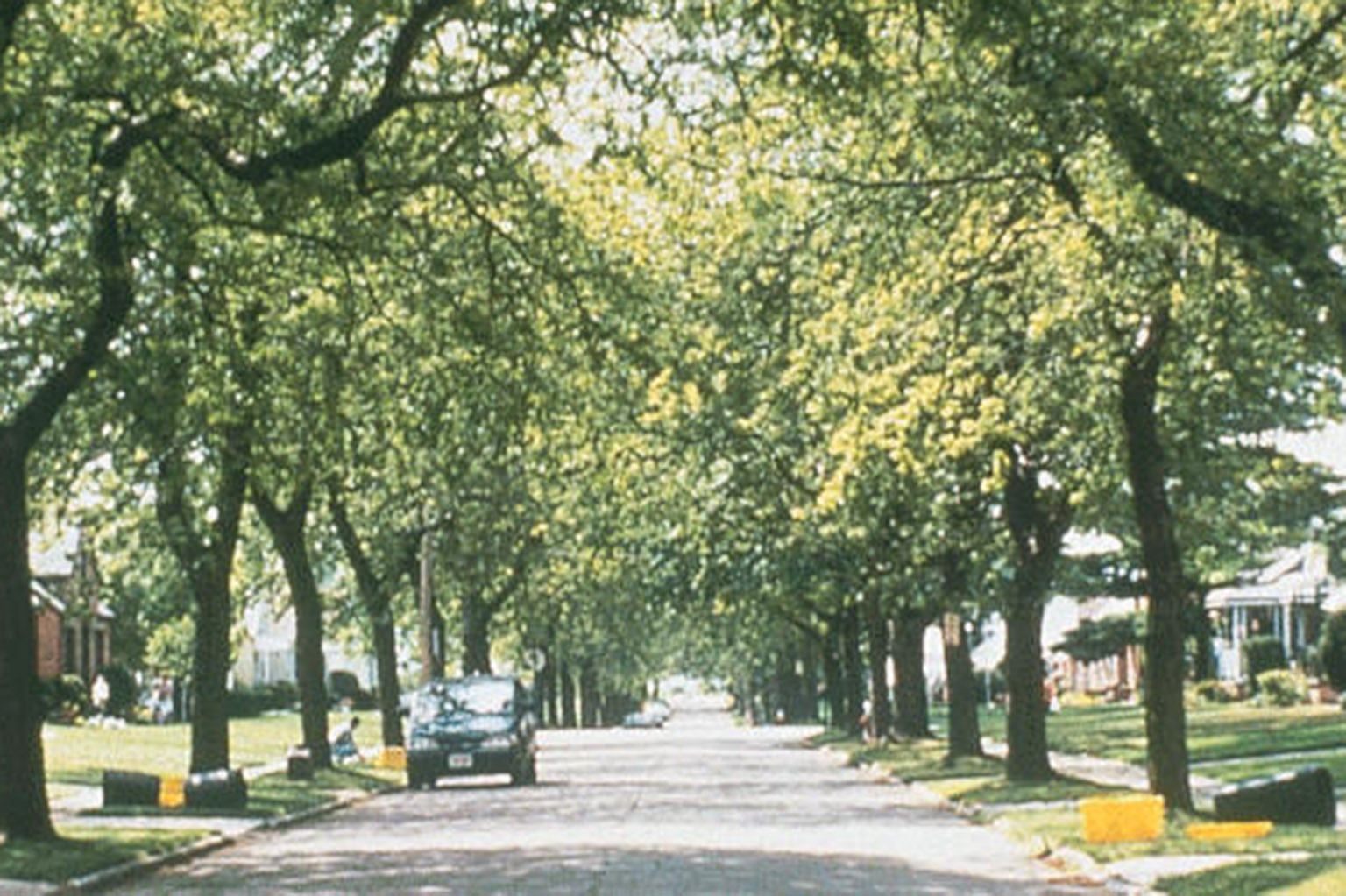Declining urban tree canopy cover in the United States underscores the importance of elucidating factors that influence the distribution of urban trees. This is particularly relevant as most urban trees are located on private property while their canopies maintain ecosystem services that constitute public goods. Thus, municipalities establish institutions in the form of canopy cover goals and various policies to incentivize private actions to meet those goals. However, urban land use, as governed by municipal zoning policies, plays a role in the abundance, distribution, and potential future location of urban trees independent of policies meant specifically to manage canopy. For instance, previous research finds that lands zoned for residential and park development have the highest canopy cover relative to other land uses. Yet, little research has explored whether this conclusion holds across scales and how it might influence our understanding of potential canopy cover (PCC) and relative canopy cover (RCC).
In this research, we ask does the nature of the relationship between zoning and canopy cover change between aggregated and disaggregated zoning scales and how might this knowledge improve the sustainability of urban forest management? To answer this question, we classified high resolution National Agriculture Imagery Program (NAIP) images of Bloomington, Indiana land cover and compared existing canopy cover (ECC), PCC and RCC across aggregated and disaggregated zones.
Results demonstrate an important exception to the oft-cited theory that residential lands have higher canopy cover, a conclusion that our data supports only at the scale of an aggregated interpretation of zoning. At a disaggregated scale, residential high density zones are significantly different than all other residential zones and more akin to commercial zones in terms of all canopy metrics. For urban forest managers and urban planners, this suggests the relevance of fine-scale variation in land-use policies and related canopy cover policies. (Modified from the abstract of the manuscript in revision at Urban Forestry & Urban Greening (Mincey et al. under review.)




